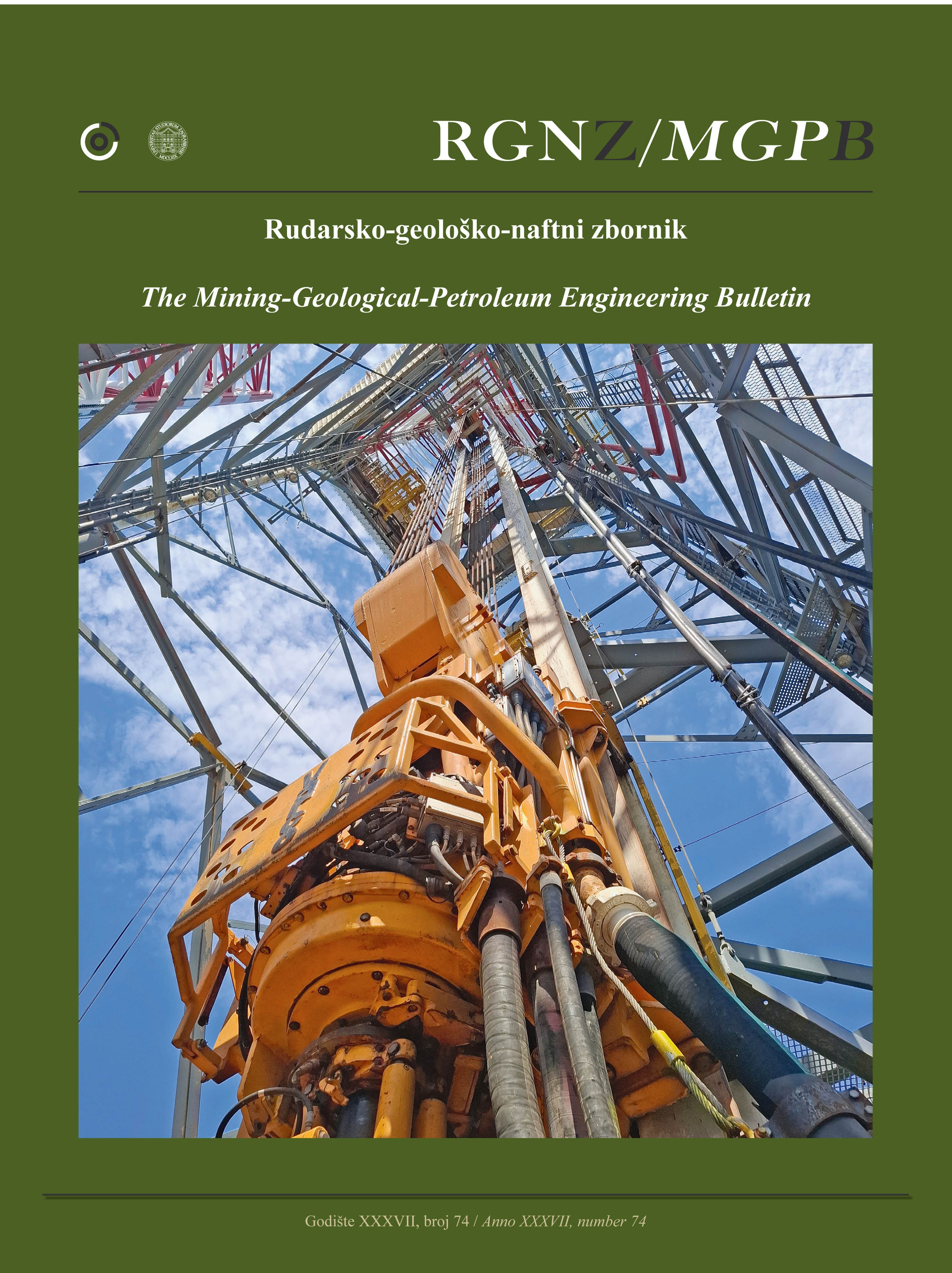Groundwater Potential Mapping (GWPM) using Analytical Hierarchy Process (AHP) in Bengkulu City, Indonesia
DOI:
https://doi.org/10.17794/rgn.2025.3.1Keywords:
AHP, Bengkulu City, GIS, groundwater potential zoneAbstract
Rapid urbanization and industrial expansion have led to heightened water demand. Groundwater plays a crucial role in urban settings for sanitation, drinking water, and agriculture. This research seeks to assess groundwater potential in Bengkulu City, Indonesia, employing the Analytical Hierarchy Process (AHP). The study incorporates eight primary factors: lineament density, drainage density, precipitation, geomorphology, geology, slope, land cover, and elevation. A multicollinearity test confirmed the absence of multicollinearity among these parameters. The pairwise comparison matrix produced a consistency ratio of 0.098 (9.8%), indicating acceptable consistency in parameter comparisons. Overlay-weighted linear combination (WLC) analysis categorized the groundwater potential into five levels: very high (2.9% or 3.83 km²), high (50.9% or 67.47 km²), moderate (35.2% or 46.71 km²), low (5.2% or 6.88 km²), and very low (5.8% or 7.64 km²). The AHP model yielded strong performance metrics, including a ROC value of 0.89, accuracy of 0.81, MAE of 0.19, RMSE of 0.43, Kappa of 0.62, precision of 0.86, recall of 0.80, and an F1-score of 0.83. Precipitation, lineament density, and drainage density were the key factors affecting groundwater potential. This study shows that the AHP method is highly effective for mapping groundwater potential, especially in urban areas like Bengkulu City. The results can assist in making informed decisions regarding well drilling for drinking water, agricultural purposes, and artificial recharge projects, contributing to sustainable groundwater management in the region.
Downloads
Published
Issue
Section
License
Copyright (c) 2025 Citra Febiola Ariska, Darmawan Ikhlas Fadli, Muhammad Afif Nabhan, Rahma Alshenta Nugraha, Belliya Hafiza, Isra Amalia, Erlan Sumanjaya, Arif Ismul Hadi, Refrizon, Ayu Maulidiyah

This work is licensed under a Creative Commons Attribution 4.0 International License.
Creative Commons-BY
Authors who publish with this journal agree to the following terms:
In agreeing this form, you certify that:
- You read the ethical codex of the RGN zbornik available at journal web.
- You submitted work is your original work, and has not previously been published and does not include any form of plagiarism.
- You own copyright in the submitted work, and are therefore permitted to assign the licence to publish to RGN zbornik.
- Your submitted work contains no violation of any existing copyright or other third party right or any material of an obscene, libellous or otherwise unlawful nature.
- You have obtained permission for and acknowledged the source of any illustrations, diagrams or other material included in the work of which you are not the copyright owner.
- You have taken due care to ensure the accuracy of the work, and that, to the best of your knowledge, there are no false statements made within it.
- All co-authors of this submitted work are aware of, and in agreement with, the terms of this licence and that the submitted manuscript has been approved by these authors.
Publication licence
You retain copyright in your submitted work, according to journal license policy (CC-BY). By signing this form you agree that RGN zbornik may publish it under the publication licence. In summary the licence allows the following:
Anyone is free:
- To copy, distribute, display, and perform the work.
- To make derivative works.
Under the following conditions:
- The original author must always be given credit.
- The work may not be used for commercial purposes.
- If the work is altered, transformed, or built upon, the resulting work may only be distributed under a licence identical to this one.
Exceptions to the licence
In addition to publishing the work printed under the above licence, RGN zbornik will also enable the work to be visible online.
The journal editorial can change the licence rules anytime but it cannot retroactively restrict author(s) rights.


